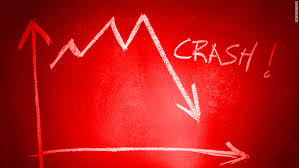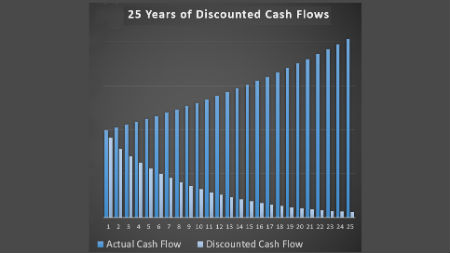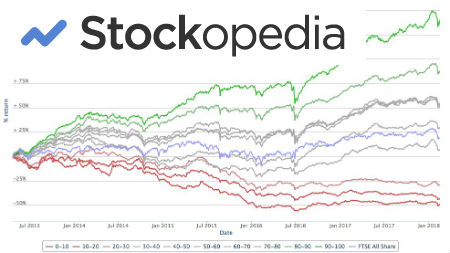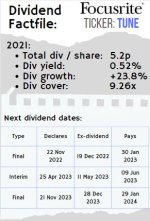Picking dividend stocks? 5 financial ratios to help you on your way
Picking dividend stocks isn't without difficulty. Financial jargon can be confusing and Wall Street analysts love to talk about confusing ratios and formulas that they claim will uncover the "secrets" of investing. Here are 5 ratios that tell you most of what you need to know to analyze a stock.
For all these ratios, we'd recommend researching them using historical data over a number of years looking for signs of one-off events which "skew" the results. You don't want to be fooled into picking dividend stocks whose ratios have been pumped up by an isolated event.
1) Price/earnings ratio
The price to earnings ratio (p/e ratio) is probably the most commonly used ratio for investors picking dividend stocks. It is simply the price of the stock divided by its earnings per share. So if a stock is trading at $100 and is earning $5 per share then the P/E ratio is twenty. Pretty simple calculation, right? But what does the P/E ratio tell you?
PRICE TO EARNINGS RATIO = SHARE PRICE/EARNINGS PER SHARE
Put simply, it tells you how quickly you would get your money back if profits after tax stayed constant and all earnings were paid back to you as an investor. This means that a LOWER p/e ratio means a CHEAPER stock.
Of course, profits don't just stay the same. You would hope that over time they would grow. The faster that profit growth, the better for you as an investor. Of course, that is often reflected in the P/E ratio and stocks that are expected to have fast earnings growth often trade on a very high multiple.
The problem with high P/E stocks is that if that fast growth does not materialize then there is a big risk of a sudden and sharp drop in the stock price as the company "re-rates".
A value investor picking dividend stocks, however, will often look at companies with lower P/E ratios as these "cheaper" stocks can provide good upside if growth picks up and these companies are often priced more due to pessimism. This can help to give an investor a "Margin of Safety" that Ben Graham talks about in chapter 20 of "The Intelligent Investor".
Remember, though, that cheap stocks are often cheap for a reason so need further exploration.
How can the P/E ratio help you picking dividend stocks, though? Well, if you buy a stock with a lower P/E ratio then you are effectively getting more earnings for what you pay.
This means that there should be more earnings available to pay you more in dividends. If you are comparing two stocks where one has a P/E ratio of 10 and the other of 20 and they have the same dividend payout ratio, then you're dividend will be twice as high for the company with the P/E ratio of 10.
It is useful to remember that the average historical P/E ratio of the US market has been around 15. This gives you a good indication of whether a particular stock or the market in general is cheap at the moment. When stocks, on average, are trading below this level then they could be a good investment going forwards.
2) Dividend yield
The dividend yield gives you an idea of what you should earn on your investment. It is calculated by dividing the dividend per share by the value of one share in the market. So a stock paying $4 per share and trading at $100 has a dividend yield of 4%. If the stock was to drop to $90 then the dividend yield would rise to 4.44% assuming the value of the dividend was unchanged.
DIVIDEND YIELD = ANNUAL DIVIDEND PER SHARE/SHARE PRICE
This, therefore, shows that the lower the stock price then the higher the yield. That said, it is important that the dividend is sustainable. Often the stock price will drop heavily before a dividend cut thus giving the illusion of a high dividend yield. The dividend is then cut and the dividend yield you thought was yours was incorrect. This is called the dividend trap.
When assessing dividend yield, it is important to think about the sustainability of the dividend. This can be done by checking out the dividend cover. You may also want to check out the strength of the balance sheet, and the ability of the dividend to grow in the future.
3) Dividend payout ratio
The dividend payout ratio tells you how much of the company's earnings are paid to you in dividends. It is calculated by dividing the dividend per share by the earnings per share. You should definitely consider it when picking dividend stocks, but it's a little more complex than it might sound.
DIVIDEND PAYOUT RATIO = ANNUAL DIVIDENDS PER SHARE/EARNINGS PER SHARE
The lower the payout ratio then the more sustainable the dividend is likely to be. Any earnings that are not used to pay shareholders are called retained earnings and can be used by the company to increase shareholder value in other ways.
Such uses could include investing in the business (capex), making acquisitions, paying down debt or buying back shares. The dividend payout ratio is really an inversion of the dividend cover. Please see our article on the dividend payout ratio for more information.
4) Return On Equity
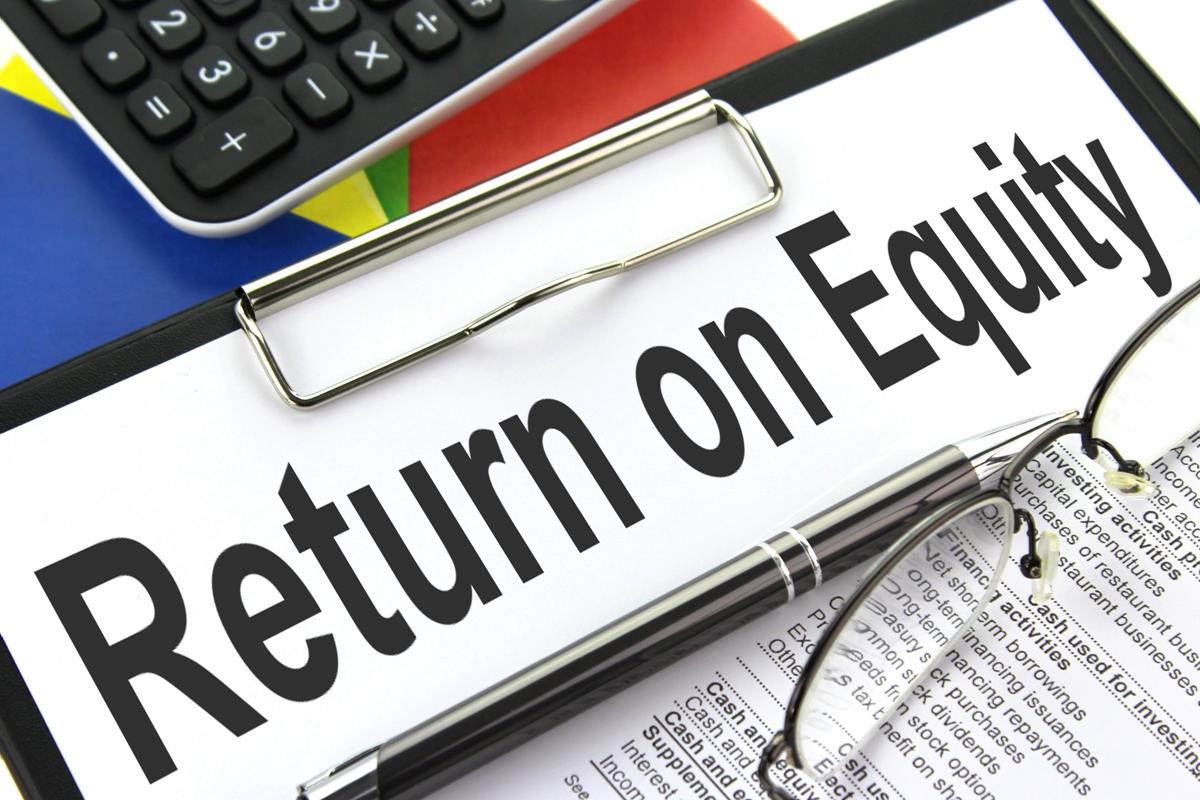
The return on equity (ROE) tells you how hard the company is "working" your shareholder cash.
RETURN ON EQUITY = NET INCOME/SHAREHOLDERS EQUITY
The higher the return on equity then the better for you as it means your invested dollars are earning a higher return. It is calculated by dividing the net income by the shareholders equity.
Although the higher the ROE the better, there are some things to watch out for (just like with every other ratio!).
Most importantly remember that the ROE can be inflated by higher amounts of debt. So if two companies have 20% ROE then it is likely that the company with lower (or even no) debt is the one that is more efficient with shareholder capital.
For more on ROE then find our page on it here.
5) Net Debt
When picking dividend stocks it's important to think about the overall debt in the business because too much debt increases the risk in the business. If you hope to collect a dividend for the next 20 years from a business, the business first of all needs to exists in 20 years' time.
Net debt sums up how much overall debt is in the business: it's simply all the debt added together - cash. If a company has more cash than debt then it is said to be in net cash.
NET DEBT = TOTAL DEBT - CASH AND CASH EQUIVALENTS
The dividend investor should consider the net debt situation because high amounts of debt can act as a big constraint on a company - especially if it hits hard times. A company with little to no debt has far more flexibility and isn't as likely to be "answerable" to bankers.
Also, if a company has no debt then they have a greater ability to make value enhancing acquisitions or other investments that can lead to greater earnings per share. We've written more about this on our page on how to analyze a balance sheet.
In Conclusion - Picking dividend stocks can be methodical
All investing takes some judgement. The future is always unpredictable and there is no "guaranteed" formula that will work everytime.
That said, if you find a stock that looks good on several measures like the ones we've mentioned above then your chances of successfully picking dividend stocks for the long term will be greater.
This is especially true if you have a good understanding of the company and how it makes money. Together all this information should enable to make you a more informed judgement about its future prospects.
Got a BURNING dividend question for 6-figure dividend earner Mike Roberts?
What is it that you really want to know about investing?
Submit a query and Mike will write a page in response.
PLEASE NOTE - in accordance with our terms of use, responses are meant for education / interest only. We do not give specific financial advice.
